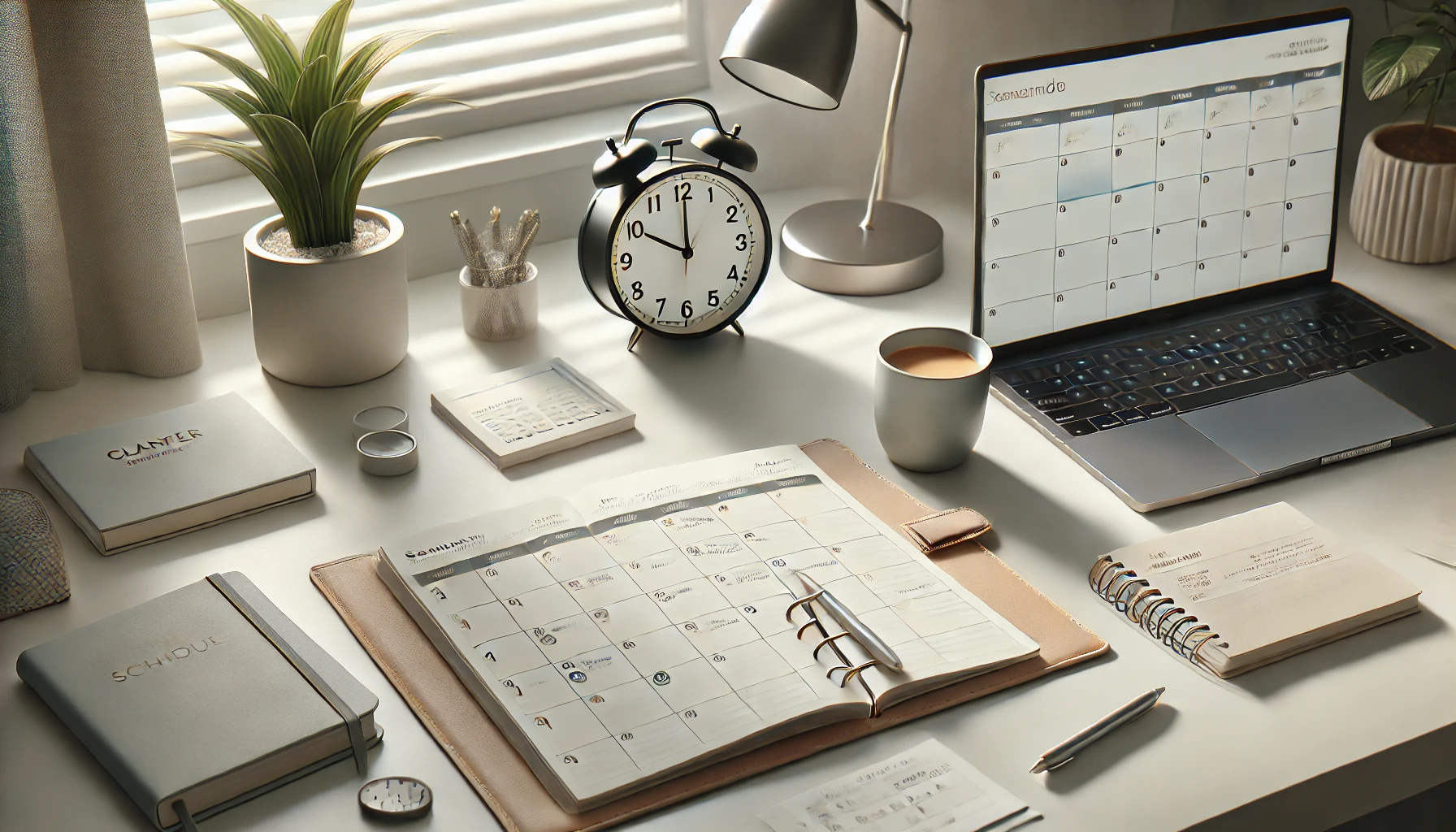In today’s fast-paced world, it’s easy to feel overwhelmed with the amount of tasks and responsibilities that come your way. Time management is crucial to ensure that you not only stay productive but also have time to relax and recharge. In this article, we’ll explore effective strategies to help you organize your time better and have more relaxed, stress-free days.
Why Time Management Matters
Effective time management is about using your time wisely so that you can accomplish your tasks without feeling rushed or stressed. When you manage your time well, you’re able to prioritize your responsibilities, avoid procrastination, and create space for relaxation and self-care. Good time management allows you to feel in control of your day and reduces anxiety.
Without proper time management, you might find yourself running out of time or missing important deadlines. This can lead to unnecessary stress and burnout. Organizing your time helps you to achieve a healthy balance between work, personal life, and downtime.
Step 1: Set Clear Goals and Priorities
The first step in organizing your time is to set clear goals and prioritize your tasks. Understanding what’s most important will help you focus on the right things and avoid wasting time on tasks that don’t contribute to your success.
To help prioritize, use the Eisenhower Matrix we discussed earlier. Categorize your tasks into:
- Important and urgent: Complete immediately.
- Important but not urgent: Schedule for later.
- Urgent but not important: Delegate if possible.
- Neither urgent nor important: Consider dropping or postponing these tasks.
By defining your priorities at the start of each day, you ensure that you’re spending your time on the most valuable tasks.
Step 2: Break Tasks Into Smaller Steps
Large tasks can feel overwhelming and lead to procrastination. A great way to tackle big projects is by breaking them into smaller, more manageable steps. This not only makes the tasks seem less intimidating but also gives you a sense of accomplishment as you check off each smaller task.
For example, instead of writing “Finish report,” break it down into:
- Research necessary data.
- Write the introduction.
- Create an outline for the main points.
- Review and edit the report.
By breaking tasks down into smaller steps, you’ll find it easier to make progress and avoid procrastination.
Step 3: Use a Time-Blocking Method
Time-blocking is an effective time management technique that involves assigning specific time slots to different tasks or activities throughout the day. This method helps you focus on one task at a time and reduces the temptation to multitask.
To use time-blocking:
- Start by listing all the tasks you need to complete.
- Estimate how much time each task will take.
- Schedule blocks of time for each task in your calendar or planner.
- Include breaks between blocks to recharge and avoid burnout.
By using time-blocking, you can ensure that each task gets the attention it deserves and that you have sufficient time for breaks and relaxation.
Step 4: Learn to Say No
Overloading your schedule is one of the main reasons people feel stressed and overwhelmed. To avoid overcommitting, learn to say “no” when necessary. Saying no doesn’t mean you’re being unkind or selfish—it means you’re protecting your time and energy.
Before accepting additional tasks, ask yourself:
- Will this task help me achieve my goals?
- Do I have enough time and energy to commit to it?
- Can I delegate this task to someone else?
By being mindful of your limits and saying no when necessary, you can ensure that your time is used for things that truly matter.
Step 5: Make Time for Breaks and Rest
Rest is an important part of time management. Without sufficient rest, you’ll become less productive, more stressed, and more likely to experience burnout. It’s essential to schedule regular breaks throughout your day to recharge and prevent fatigue.
Incorporate short breaks into your time-blocking schedule:
- Take a 5-10 minute break after every 45-60 minutes of work.
- Use break time to stretch, take a walk, or simply relax.
- Make sure you take longer breaks for meals to recharge fully.
By prioritizing rest and breaks, you can maintain high levels of productivity throughout the day and avoid mental exhaustion.
Step 6: Review and Adjust Your Schedule
At the end of each day or week, take time to review your progress and adjust your schedule as needed. Reflect on what worked well and what didn’t, and make improvements for the future. This process of reflection allows you to continuously improve your time management and ensures that you stay on track with your goals.
If you find that certain tasks are taking longer than expected, adjust your time blocks accordingly. If you’re feeling burnt out, schedule more rest time in your week. Regular reviews help you fine-tune your routine for optimal balance and productivity.
Conclusion
By using these strategies, you can organize your time better and create more relaxed, stress-free days. Time management isn’t just about getting things done—it’s about creating a balance between work, personal life, and rest. With clear goals, time-blocking, and regular breaks, you can achieve more in less time while maintaining your well-being.
Remember, the key to effective time management is consistency and flexibility. Stay organized, but also allow yourself the space to adjust as needed. With time, you’ll find a rhythm that works for you and leads to more productive, enjoyable days.
